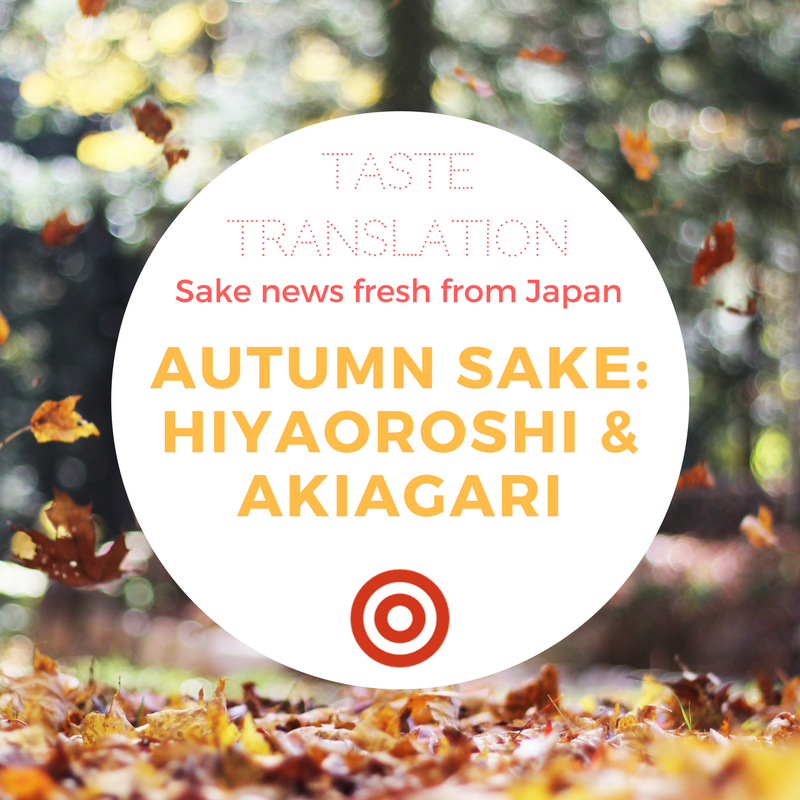
Tomomi Seki, a sake educator writing for the Business Journal site (Japanese), covered autumn sake events with the aim of helping more people enjoy this seasonal sake.
Unlike summer sake, which turned out to be a recent invention, autumn sake is a genuine seasonal product tied to the brewing cycle – which is in turn based on the seasonal nature of the rice harvest.
The article starts off by defining two types of autumn sake:
- hiyaoroshi: Sake brewed in early spring of the same year, pasteurised once and then bottled or stored in tanks before being released in the autumn.
- akiagari: This term has no bearing on how the sake was brewed or stored, but indicates it was brewed in early spring of the same year, held over the summer and released at the beginning of autumn. It can also indicate the sake was pasteurised twice before autumn.
She cautions that although this is roughly what the terms mean, there are no strict definitions and different breweries use them in different ways. At the very least, they indicate sake that has been matured for a certain period of time and lost the some of the rougher, harsher characteristics of just-brewed shinzake (new/fresh sake), becoming more rounded and mellow in aroma and flavour.
Sake is usually brewed in the lower temperatures of later October to early May, with the first batches of just-brewed sake released from November enjoyed for their indication of the quality of the previous year’s rice harvest and the current brewing. However, this very young brew needs careful handling both for drinking and storage. By comparison, hiyaoroshi has matured a little and mellowed, meaning it can be drunk at a range of temperatures and paired with food such as mackerel, mushrooms or root vegetables.
She goes on to rate a few different types of events (not an exhaustive list) in terms of suitability for people new to sake:
- Nomi-aruki: (飲み歩き) Literally walking and drinking, this could be bar-hopping or sake shop-hopping, or maybe a succession of booths or tents set up for an event. The article rates this format 5/5 for newbies as it makes it easy to go to new places and try lots of different types of sake.
- Chakuseki: (着席) A more formal seated tasting. Rated 4/5, recommended for letting newcomers experience food pairing and taste several different sakes in succession. They could be held by a brewery, letting visitors taste the full range of sake they produce, or by sake shops to show how to match sake with different dishes.
- Kurabiraki: (蔵開き) Brewery open days, rated 3/5 as it’s best to already have tried some sake and have a few favourite brewers. Although it can be an amazing experience to drink the sake where it’s produced, alongside the local foods that it’s made to go with, many breweries are in remote areas so it can be a lot of trouble for someone new to sake to go to.
- Kaku-uchi: (角打ち) Rated 5/5, these events see newcomers tasting sake with the owner of a sake shop and buying the ones they like on the spot. It can be hard to choose a brewery or sake without much knowledge, so being able to ask the shop staff should put new buyers’ minds to rest.
- Kaiyū: (回遊) Visiting a succession of brewery stands at a hotel or event hall, rated only 1/5 for newcomers. The low rating is because these events are aimed more at professionals such as restaurant or bar owners or people working in sake shops looking for new items to stock, and could have up to 100 breweries and 300 types of sake, making them overwhelming for someone without much experience.
Links
- Original article (Japanese, Business Journal, 20 October 2017)